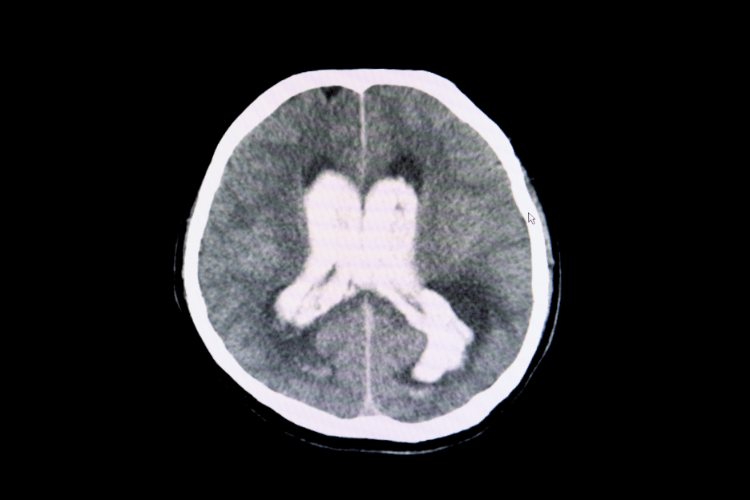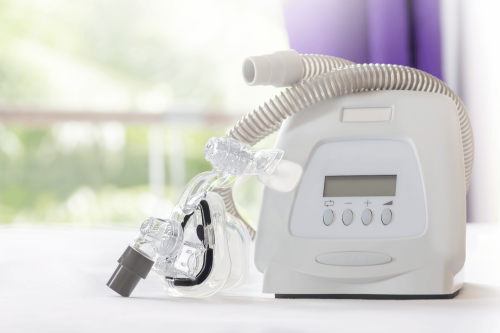
Hemorrhage, commonly referred to as bleeding, occurs when blood escapes from blood vessels due to injury or medical conditions. It can range from minor to life-threatening, depending on the cause and severity. In this blog, we’ll explore the causes, symptoms, and different types of hemorrhages, helping you understand how to recognize and respond to this critical medical condition.
Symptoms and Causes of Hemorrhage
Hemorrhagic events, commonly referred to as bleeding episodes, occur when blood escapes from the circulatory system due to damage to blood vessels. These events can range from minor, such as a small cut, to severe, such as internal bleeding or hemorrhages in critical areas like the brain. Hemorrhages are classified based on their location, such as intracranial, gastrointestinal, or subcutaneous, and their severity depends on factors like the volume of blood lost and the speed of the bleeding.
The body has natural mechanisms to control bleeding, such as clot formation, but when these fail or the damage is extensive, medical intervention becomes necessary. Hemorrhagic events can be life-threatening if not addressed promptly, especially when they occur internally, as they may not be immediately visible. Understanding the causes and symptoms of hemorrhages is crucial for timely diagnosis and treatment.
Common Causes of Bleeding
Bleeding can result from a variety of factors, ranging from external injuries to internal medical conditions. Below are some of the most common causes:
-
Trauma or Injury: Physical injuries, such as cuts, abrasions, or blunt force trauma, are among the most frequent causes of bleeding. These can damage blood vessels, leading to external or internal blood loss.
-
Medical Conditions: Certain health conditions, such as hemophilia, liver disease, or thrombocytopenia, impair the blood's ability to clot, increasing the risk of prolonged bleeding.
-
Medications: Blood-thinning medications like aspirin, warfarin, or anticoagulants can make individuals more prone to bleeding, even from minor injuries.
-
Surgical Procedures: Post-surgical bleeding is a common complication, especially if blood vessels are not adequately sealed during the procedure.
-
Aneurysms and Ruptures: Weak spots in blood vessels, known as aneurysms, can rupture and cause significant internal bleeding, particularly in the brain or abdomen.
-
Gastrointestinal Bleeding: Conditions like ulcers, gastritis, or colorectal cancer can lead to bleeding within the digestive tract, often presenting as blood in stool or vomit.
-
Pregnancy Complications: Issues such as ectopic pregnancies, placental abruption, or postpartum hemorrhage can result in severe bleeding in women.
By identifying the underlying cause, healthcare providers can determine the most effective treatment approach, whether it involves surgical intervention, medication, or supportive care.
Symptoms of Intracranial Hemorrhage
 An intracranial hemorrhage occurs when blood vessels in the brain rupture, leading to bleeding within the skull. This type of hemorrhage is a medical emergency and can result in severe neurological damage or death if not treated promptly. Symptoms of an intracranial hemorrhage may include:
An intracranial hemorrhage occurs when blood vessels in the brain rupture, leading to bleeding within the skull. This type of hemorrhage is a medical emergency and can result in severe neurological damage or death if not treated promptly. Symptoms of an intracranial hemorrhage may include:
- Severe Headache: Often described as the worst headache of one’s life, this pain is sudden and intense.
- Nausea and Vomiting: These symptoms may accompany the headache and are caused by increased pressure within the skull.
- Loss of Consciousness: Depending on the severity of the bleeding, individuals may faint or become unresponsive.
- Neurological Deficits: Symptoms such as weakness or numbness on one side of the body, difficulty speaking, or vision changes may occur due to pressure on specific areas of the brain.
- Seizures: Bleeding in the brain can disrupt normal electrical activity, leading to seizures.
- Confusion or Altered Mental State: Individuals may appear disoriented, have trouble concentrating, or exhibit unusual behavior.
Understanding Hemorrhagic Events
Hemorrhagic events can vary widely in severity, from minor nosebleeds to life-threatening internal bleeding. The severity of a hemorrhage depends on factors such as the location of the bleeding, the amount of blood lost, and the individual’s overall health.- External Hemorrhages: These are often easier to identify and manage, as the bleeding is visible. Applying direct pressure to the wound can help control blood loss until medical help arrives.
- Internal Hemorrhages: These are more challenging to detect, as the bleeding occurs inside the body. Symptoms such as abdominal pain, swelling, or unexplained weakness may indicate internal bleeding and require urgent evaluation.
Diagnosis and Tests for Brain Bleeds
Diagnosing a brain bleed, or intracranial hemorrhage, requires a combination of clinical evaluation, imaging studies, and laboratory tests. Early and accurate diagnosis is critical to determine the severity of the bleeding, identify its cause, and guide appropriate treatment. Below are the key diagnostic methods used to evaluate brain bleeds.
Diagnostic Procedures for Hemorrhage
The diagnostic process for a brain bleed typically begins with a thorough clinical assessment. Healthcare providers evaluate the patient’s symptoms, medical history, and physical condition to determine the likelihood of an intracranial hemorrhage.- Clinical Evaluation:
- Symptoms such as severe headache, nausea, confusion, or neurological deficits (e.g., weakness or numbness) often prompt further investigation.
- A detailed medical history, including information about recent trauma, use of blood-thinning medications, or preexisting conditions like high blood pressure, helps identify potential risk factors.
- Neurological Examination:
- A neurological exam assesses the patient’s mental status, reflexes, coordination, and motor function. Abnormal findings, such as slurred speech or difficulty walking, may indicate brain involvement and the need for imaging studies.
Imaging Techniques for Intracranial Bleeds
Imaging studies are the cornerstone of diagnosing brain bleeds, as they provide detailed visual information about the location, size, and extent of the hemorrhage. The most commonly used imaging techniques include:- Computed Tomography (CT) Scan:
- A CT scan is often the first imaging test performed in suspected cases of brain bleeding. It is fast, widely available, and highly effective at detecting acute hemorrhages.
- CT scans can reveal the presence of blood within the brain, skull fractures, or swelling, helping doctors determine the severity of the condition.
- Magnetic Resonance Imaging (MRI):
- An MRI provides more detailed images of the brain and is particularly useful for identifying smaller or older bleeds that may not be visible on a CT scan.
- Specialized MRI techniques, such as gradient-echo or susceptibility-weighted imaging, can detect microbleeds and subtle changes in brain tissue.
- Angiography:
- Cerebral angiography involves injecting a contrast dye into the blood vessels and using X-rays or CT/MRI to visualize blood flow. This test is often used to identify aneurysms, arteriovenous malformations, or other vascular abnormalities that may have caused the bleed.
- Ultrasound (Transcranial Doppler):
- In some cases, transcranial Doppler ultrasound is used to assess blood flow in the brain’s major arteries. It is less commonly used but can provide valuable information in specific situations, such as monitoring vasospasm after a subarachnoid hemorrhage.
Laboratory Tests and Assessments
In addition to imaging studies, laboratory tests are often performed to evaluate the patient’s overall health and identify factors that may have contributed to the brain bleed. Key laboratory assessments include:- Complete Blood Count (CBC):
- A CBC measures red blood cells, white blood cells, and platelets. Low platelet levels (thrombocytopenia) can impair clotting and increase the risk of bleeding.
- Coagulation Tests:
- Tests such as prothrombin time (PT), activated partial thromboplastin time (aPTT), and international normalized ratio (INR) assess the blood’s ability to clot. Abnormal results may indicate a bleeding disorder or the effects of anticoagulant medications.
- Electrolyte and Metabolic Panel:
- This panel evaluates electrolyte levels, kidney function, and glucose levels, which can affect brain function and recovery.
- Toxicology Screening:
- In some cases, toxicology tests are performed to detect the presence of drugs or alcohol, which may contribute to the risk of bleeding or complicate treatment.
- Blood Pressure Monitoring:
- Persistent high blood pressure is a common cause of brain bleeds. Continuous monitoring helps guide treatment to prevent further damage.
Management and Treatment of Hemorrhagic Conditions
Effective management of hemorrhagic conditions requires a combination of emergency interventions, surgical procedures, and ongoing supportive care. The treatment approach depends on the severity, location, and underlying cause of the bleeding. Prompt and appropriate care is essential to minimize complications and improve patient outcomes.Emergency Management of Bleeds
In cases of severe bleeding, immediate action is critical to stabilize the patient and prevent further blood loss. Emergency management typically involves the following steps:- Control of External Bleeding:
- For visible bleeding, direct pressure is applied to the wound using a clean cloth or bandage to slow blood loss. Elevating the affected area above heart level can also help reduce bleeding.
- In cases of severe trauma, tourniquets may be used as a last resort to control bleeding from limbs.
- Fluid Resuscitation:
- Intravenous (IV) fluids, such as saline or lactated Ringer’s solution, are administered to maintain blood pressure and ensure adequate circulation.
- In cases of significant blood loss, blood transfusions may be necessary to restore red blood cell levels and improve oxygen delivery to tissues.
- Airway and Breathing Support:
- Patients with severe hemorrhage may require oxygen therapy or mechanical ventilation to ensure adequate oxygenation.
- Monitoring and Stabilization:
- Vital signs, including blood pressure, heart rate, and oxygen levels, are closely monitored. Any signs of shock or organ dysfunction are addressed immediately.
Surgical Interventions for Brain Bleeds
Surgical procedures are often required to treat brain bleeds, especially when the bleeding causes increased pressure within the skull or threatens critical brain structures. Common surgical interventions include:- Craniotomy:
- A craniotomy involves creating an opening in the skull to access the brain and remove accumulated blood. This procedure is often performed for large hematomas or to relieve pressure caused by swelling.
- Endovascular Procedures:
- Minimally invasive techniques, such as coiling or embolization, are used to treat aneurysms or arteriovenous malformations (AVMs) that have caused the bleed. These procedures involve inserting a catheter into the blood vessels to repair the damaged area.
- Decompressive Craniectomy:
- In cases of severe brain swelling, a portion of the skull may be temporarily removed to allow the brain to expand and reduce intracranial pressure.
- Hematoma Evacuation:
- For smaller bleeds, minimally invasive techniques may be used to drain the hematoma through a small incision.
Medications and Supportive Care
Medications and supportive therapies play a vital role in managing hemorrhagic conditions, both during the acute phase and throughout recovery. Key treatments include:- Medications to Control Bleeding:
- Antifibrinolytics: Drugs like tranexamic acid help prevent the breakdown of blood clots, reducing further bleeding.
- Vitamin K and Clotting Factors: For patients on blood thinners, vitamin K or clotting factor concentrates may be administered to reverse the effects of anticoagulants.
- Blood Pressure Management:
- High blood pressure is a common cause of brain bleeds. Medications such as beta-blockers or calcium channel blockers are used to lower blood pressure and reduce the risk of further bleeding.
- Pain and Symptom Relief:
- Pain relievers and anti-nausea medications are often prescribed to manage symptoms like headaches and vomiting.
- Rehabilitation and Recovery Support:
- Physical therapy, occupational therapy, and speech therapy may be necessary for patients recovering from brain bleeds to regain lost functions and improve quality of life.
- Psychological support and counseling can help patients cope with the emotional impact of their condition.
- Monitoring and Follow-Up:
- Regular follow-up appointments and imaging studies are essential to monitor the healing process and detect any recurrence of bleeding.
Frequently Asked Questions
Q: What is hemorrhage?
A: Hemorrhage refers to bleeding, which can occur either externally or internally. It involves the loss of blood from the circulatory system and can range from minor to life-threatening, depending on the severity, location, and underlying cause of the bleeding.
Q: What are the types of hemorrhages?
A: Hemorrhages can be classified into several types, including:
- External Bleeding: Visible blood loss from cuts or injuries.
- Internal Bleeding: Bleeding within the body, such as in organs or tissues.
- Specific Conditions: Examples include gastrointestinal bleeding, postpartum hemorrhage, and intracerebral hemorrhage. Each type has unique causes and health implications, requiring tailored treatment approaches.
Q: What causes internal bleeding?
A: Internal bleeding can result from trauma to internal organs, ruptured blood vessels, or medical conditions like bleeding disorders. It may also occur due to aneurysms, ulcers, or complications from surgery. Since internal bleeding is not always visible, it’s important to recognize symptoms like severe pain, swelling, or dizziness.
Q: How can you recognize severe bleeding?
A: Severe bleeding may present with symptoms such as:
- Excessive blood loss or visible pooling of blood.
- Rapid heartbeat and low blood pressure.
- Pale or clammy skin, weakness, or fainting.
- Large bruises or swelling in the affected area. If left untreated, severe bleeding can lead to shock or life-threatening complications, requiring immediate medical attention.
Q: What should you do to stop bleeding?
A: To stop bleeding, follow these first aid steps:
- Apply firm, direct pressure to the wound using a clean cloth or bandage.
- Elevate the injured area above heart level, if possible.
- Use a tourniquet as a last resort for severe limb bleeding. For significant blood loss, seek emergency medical care immediately to prevent further complications.
Q: What is postpartum hemorrhage?
A: Postpartum hemorrhage is excessive bleeding that occurs after childbirth. It is often caused by uterine atony (failure of the uterus to contract), retained placenta, or trauma during delivery. This condition can pose serious risks to the mother’s health and requires prompt medical intervention to control blood loss.
Q: What are the signs of a hemorrhagic stroke?
A: A hemorrhagic stroke occurs when a blood vessel in the brain ruptures, leading to bleeding. Common signs include:
- Sudden, severe headache.
- Confusion or difficulty understanding speech.
- Weakness or numbness, often on one side of the body.
- Vision problems or difficulty speaking. Immediate medical attention is critical to minimize brain damage and improve outcomes.
Q: How does von Willebrand disease affect bleeding risk?
A: Von Willebrand disease is a genetic bleeding disorder that impairs the blood’s ability to clot. People with this condition may experience prolonged bleeding from minor cuts, heavy menstrual bleeding, or spontaneous nosebleeds. This increases their risk of hemorrhage, especially during surgery or injury.
Q: Can high blood pressure lead to hemorrhage?
A: Yes, chronic high blood pressure can weaken blood vessel walls, making them more prone to rupture. This can result in serious conditions like hemorrhagic stroke or subarachnoid hemorrhage, particularly in the brain. Managing blood pressure is essential to reduce the risk of these complications.
Q: What is the total blood volume in an adult?
A: The average blood volume in an adult ranges from 4.5 to 6 liters, depending on body size and composition. Losing a significant portion of this volume, such as through severe bleeding, can lead to critical health issues like hypovolemic shock, requiring immediate medical intervention.
Conclusion
Hemorrhages can vary in severity, but understanding their causes, symptoms, and types is essential for timely intervention. Whether it’s a minor bleed or a severe hemorrhage, knowing how to respond can save lives and prevent complications. Stay informed and prepared to act in emergencies involving bleeding.








 Login with Google
Login with Google Login with Facebook
Login with Facebook